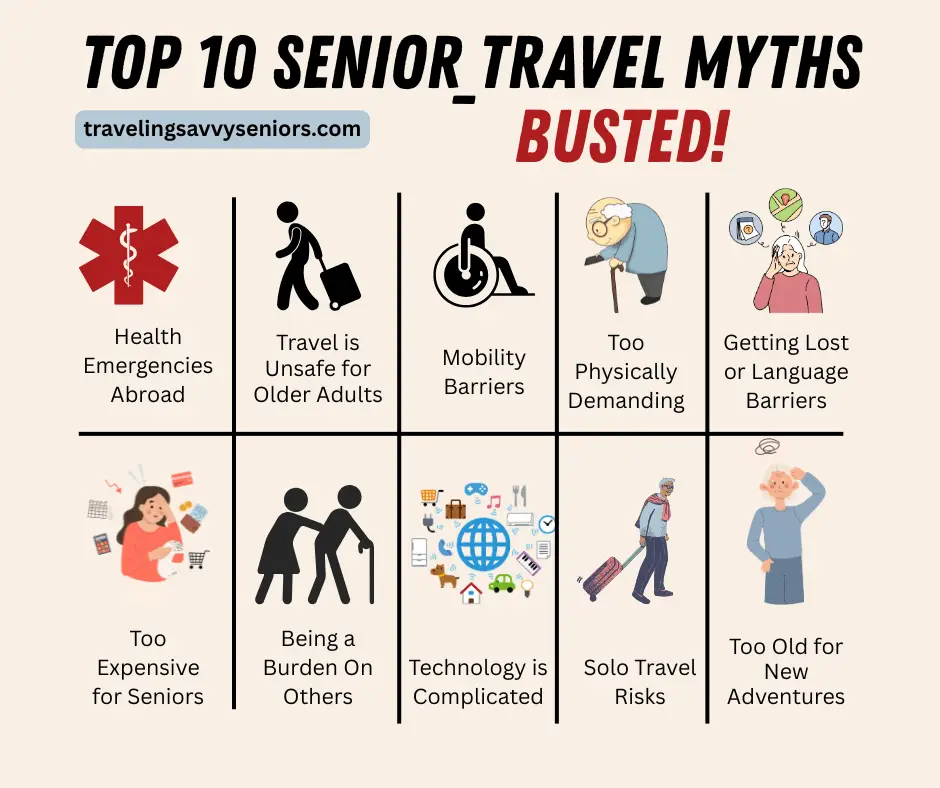Travel brings joy and new experiences, and it should be accessible to everyone, regardless of age or mobility. For seniors and travelers with special needs, thoughtful planning can make all the difference in enjoying safe, comfortable, and memorable trips.
Tips for Accessible Travel
- Choose destinations with flat terrain, smooth pathways, and accessible public transportation. Cities like San Diego, Vancouver, or Edinburgh are known for their senior-friendly amenities and mobility accommodations.
- Opt for accommodations offering accessibility features such as elevators, walk-in showers with grab bars, wide doorways, and proximity to transport and attractions. Always call ahead to confirm these details before booking.
- Use assistive devices like canes, walkers, or mobility scooters, and pack light with rolling suitcases and hands-free bags to reduce strain and improve mobility.
- Plan your itinerary ahead of time, including direct flights to minimize transfers, and check that all points on your route offer necessary accessibility.
- Communicate your specific needs clearly to airline, hotel, and tour staff in advance to ensure they can accommodate you appropriately.
- Consider joining guided tours designed especially for seniors or those with disabilities. These often include slower-paced activities and specialized support.
- Carry essential medications, personal care items, emergency contacts, and a list of nearby medical facilities for peace of mind.
Travel Advisories for Seniors and Special Needs Travelers
Stay updated on health and safety advice from trusted sources such as the CDC, especially about current travel health notices or food and water safety tips. Avoid high-risk areas or strenuous activities that may pose health challenges, and always have emergency plans in place.
Destination Spotlights with Accessibility Features
- Scenic Cruises: Ship accommodations are often wheelchair accessible with elevators and dedicated cabins, offering a stable and convenient way to see multiple destinations without constant packing.
- National Parks: Parks like Yellowstone and the Grand Canyon have accessible trails, shuttle services, and lookout points designed for visitors with mobility issues.
- Historic Cities: Bath, York, and Edinburgh offer charm combined with accessibility, including smooth walkways, accessible public transit, and senior-friendly guided tours.
- Beach Towns: Accessible boardwalks and beach wheelchairs make some coastal towns ideal for seniors to enjoy the outdoors peacefully.
Navigating Common Travel Challenges
- Always confirm accessibility features like elevators or ramps before arrival. Some historic sites or hotels may have limited upgrades, so ground-floor rooms might be better alternatives if elevators are unavailable.
- Use technology to your advantage: apps can help locate accessible restrooms, restaurants, and routes, reducing the stress of navigating new places.
- Traveling with a support system—family, friends, or a specialized travel group—can provide companionship and assistance, making the journey safer and more enjoyable.
- Pace yourself and take regular breaks using assistive seating or rest areas to avoid fatigue.
By prioritizing accessibility, planning carefully, and choosing supportive destinations and services, seniors and travelers with special needs can continue to explore the world comfortably and confidently, creating treasured memories every step of the way.
Ready to make your next journey effortless and truly enjoyable? Let our Personalized Travel Planning services tailor every detail to your unique needs. Whether you’re a senior or traveling with special accessibility requirements, we’re here to help you explore the world with confidence and comfort. Contact us today to start planning your accessible adventure, and don’t forget to subscribe to our site for regular travel tips, destinations, and guides on how to turn your travel dreams into awesome destinations!

Show Your Support: BUY ME A CUP OF COFFEE!
https://buymeacoffee.com/travelingsavvyseniors





